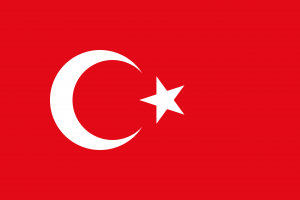Language/Turkish/Culture/History-and-Geography
 Հայերէն
Հայերէն Български език
Български език 官话
官话 官話
官話 Hrvatski jezik
Hrvatski jezik Český jazyk
Český jazyk Nederlands
Nederlands English
English Suomen kieli
Suomen kieli Français
Français Deutsch
Deutsch עברית
עברית हिन्दी
हिन्दी Magyar
Magyar Bahasa Indonesia
Bahasa Indonesia فارسی
فارسی Italiano
Italiano 日本語
日本語 Қазақ тілі
Қазақ тілі 한국어
한국어 Lietuvių kalba
Lietuvių kalba Νέα Ελληνικά
Νέα Ελληνικά Şimali Azərbaycanlılar
Şimali Azərbaycanlılar Język polski
Język polski Português
Português Limba Română
Limba Română Русский язык
Русский язык Српски
Српски Español
Español العربية القياسية
العربية القياسية Svenska
Svenska Wikang Tagalog
Wikang Tagalog தமிழ்
தமிழ் ภาษาไทย
ภาษาไทย Українська мова
Українська мова Urdu
Urdu Tiếng Việt
Tiếng ViệtAs a Turkish language teacher with 20 years of experience, I cannot stress enough the importance of teaching Turkish culture alongside the language. Not only it makes learning the language more enjoyable, but it also helps to understand a country's customs, traditions, and way of thinking. In this lesson, we will explore the history and geography of Turkey, a country with a rich and diverse cultural heritage.
History
Turkey's history goes back to ancient times, with the Hittites, one of the earliest Indo-European peoples, establishing a powerful kingdom in Anatolia around the 18th century BC. Many other civilizations followed, such as the Phrygians, Lydians, Persians, Greeks, and Romans, who all left their mark on the region.
After the fall of the Byzantine Empire, the Ottoman Empire emerged and quickly rose to become a dominant power in the Mediterranean and the Middle East throughout the 16th and the 17th centuries. The empire reached its peak under the reign of Sultan Suleiman the Magnificent when it spanned three continents and included parts of Europe, Asia, and Africa.
In the 20th century, the Republic of Turkey was established following the collapse of the Ottoman Empire after World War I. Mustafa Kemal Atatürk, the founding father of modern Turkey, implemented sweeping reforms to transform the country into a secular and modern republic. Today, Turkey is a thriving democracy with a rich history and a bright future.
Geography
Turkey is a transcontinental country, spanning both Europe and Asia. It is located in a strategically significant location, serving as a bridge between the East and the West. Turkey is bordered by eight countries, including Greece, Bulgaria, Georgia, Armenia, Iran, Iraq, Syria, and Azerbaijan. The country is also surrounded by three seas - the Black Sea to the north, the Aegean Sea to the west, and the Mediterranean Sea to the south.
One of Turkey's most distinct features is its diverse geography. The country has a varied landscape that includes mountains, plains, forests, and coastline. It is home to several significant rivers, such as the Euphrates, Tigris, and Sakarya, which have historically played a crucial role in the region's development.
Turkey has a rich flora and fauna, with many endemic species found throughout the country. The Anatolian plateau, one of the largest upland regions in the world, is a sanctuary for many of these species.
Conclusion
In conclusion, Turkey is a country with a rich cultural heritage and history. Its diverse geography, strategic location, and vibrant cultural scene make it a fascinating place to explore. We hope that this lesson has given you a glimpse into the country's past and present, and has fueled your curiosity to learn more about this remarkable place.
Sources
Related Lessons
- Religion
- Symbols of Bursa
- Family and Relationships
- Transportation and Travel
- Cuisine
- Traditions and Customs
- Cinema
- Best Places to Visit in Turkey
- Mesajlaşmalarda Kullanılar Kısaltmalar
- Arts and Festivals

